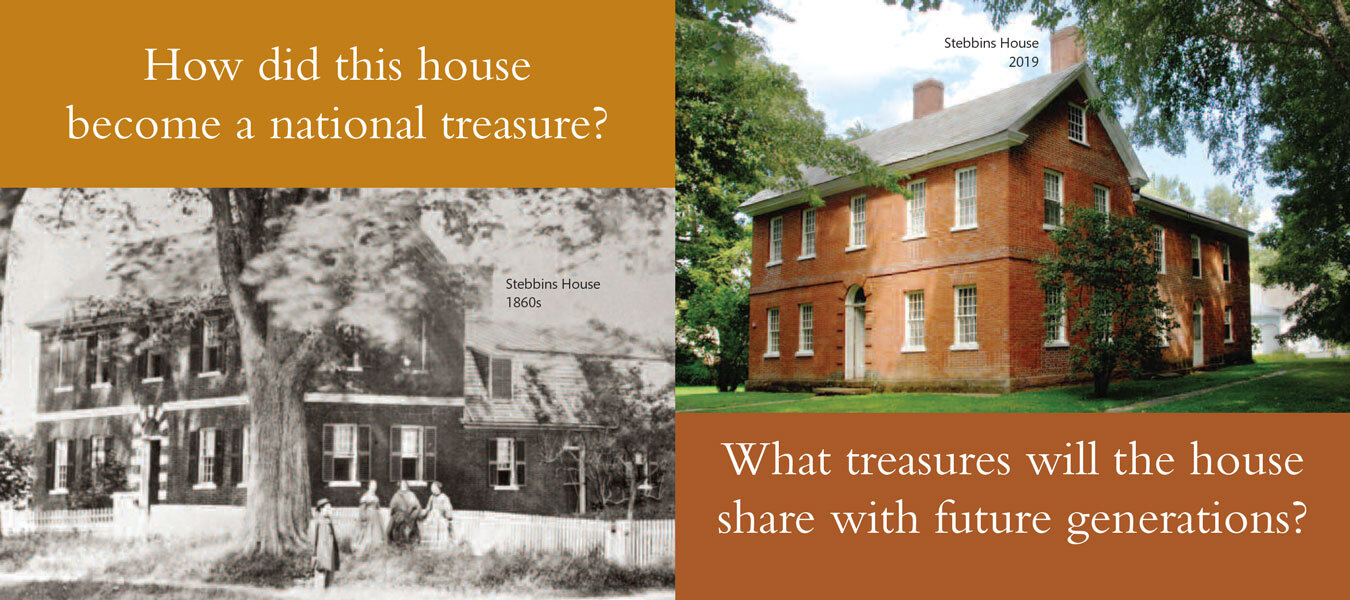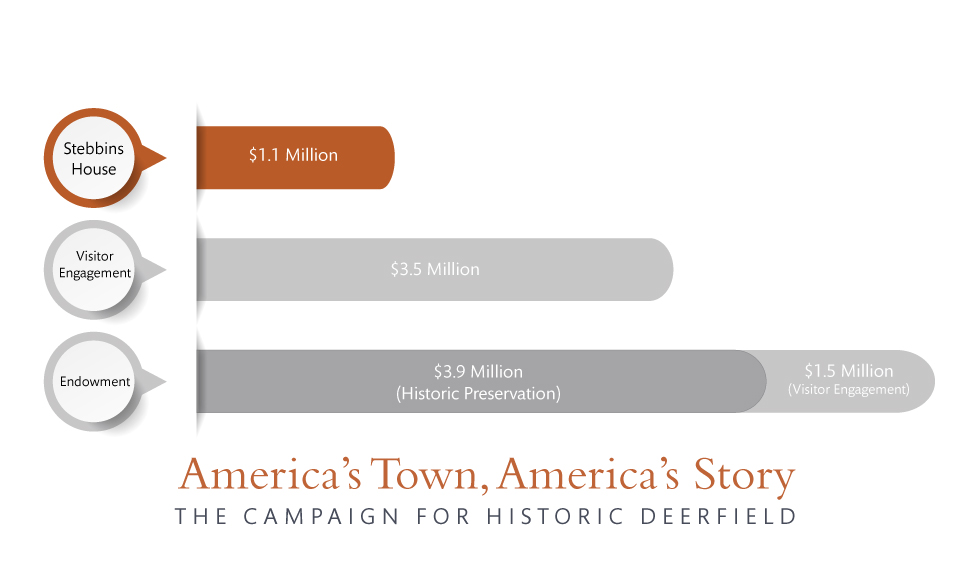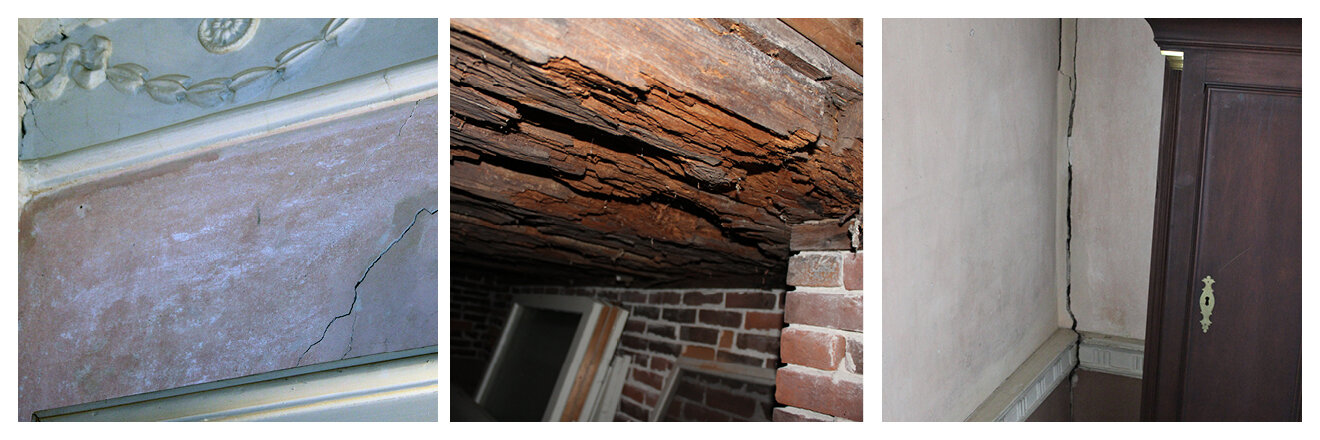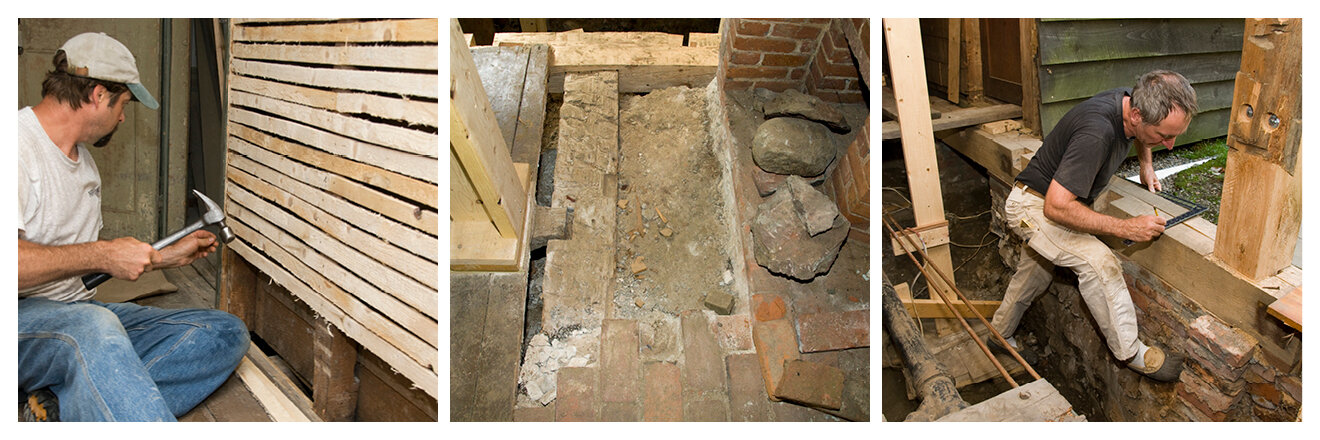
The Stebbins House is a national treasure that continues to tell the American story 220 years after it was built. When the Stebbins House was constructed in 1799 it was experimental and revolutionary – the first brick house built in this part of Massachusetts. Likely designed by one of America’s first architects, for Asa and Emilia Stebbins, the house features a “flying staircase,” an elaborate molded plaster ceiling in the south parlor, moldings inspired by Greek and Roman design, and decorative wall treatments – details that make it one of Historic Deerfield’s most popular houses.
Under the direction of the museum’s Director of Historic Preservation, Eric Gradoia, a thorough study phase will allow Historic Deerfield to develop a comprehensive understanding of the Stebbins House. By re-examining the historical record, including compiling all known archival documents pertaining to the history of the site, the people who lived within these walls (from the Stebbins ownership to the present day), and the building itself, Historic Deerfield staff will build a chronology of the life of the occupants as well as the evolution and uses of the site.

What new details will these studies reveal about the house’s past?
Close study of the architectural fabric — the plan and structure, millwork, hardware, finishes and decorative treatments — is critical. The first priority will be to examine the building for any structural issues. The project team will open up portions of the house – walls, ceilings, floors – to gain a better understanding of the cracks and slopes and to determine the best solutions for running modern environmental control systems. Additional studies will include sampling finishes for cross section microscopy in order to determine paint colors and to date the vintage of various architectural elements, dendrochronology to confirm the framing sequence, and infrared imaging to help determine details hidden from view. While the full scope of repair needs to be determined, known issues like the support of interior walls and their connection to the exterior brickwork must be resolved as well as the selective replacement of deteriorated timbers supporting the ell’s chimney mass.

Will study of the interior and exterior spaces in and around the Stebbins House uncover new stories?
Exterior work will involve a variety of tasks that include both the building and surrounding landscape. Will the brickwork be painted? Were exterior shutters part of the initial detailing? Should the roof return to a hip configuration? Research should help to answer these questions and more. Archaeology will follow in order to gather information on the areas surrounding the house. Locating features such as wells, privies, paths, outbuildings, etc. will help to expand understanding of the site, its use, and chronological evolution. A landscape plan will address treatment of the surrounding environment based on these studies, and will inform decisions on plantings, walks, and fences to more accurately reflect the Stebbins family tastes.

Will the Stebbins House look the same to future generations of visitors? How might it differ?
Please help support the restoration of the Stebbins House with a generous donation so that future generations can have an opportunity to better understand the stories hidden in the floors, walls, structure, and surroundings of this magnificent building.